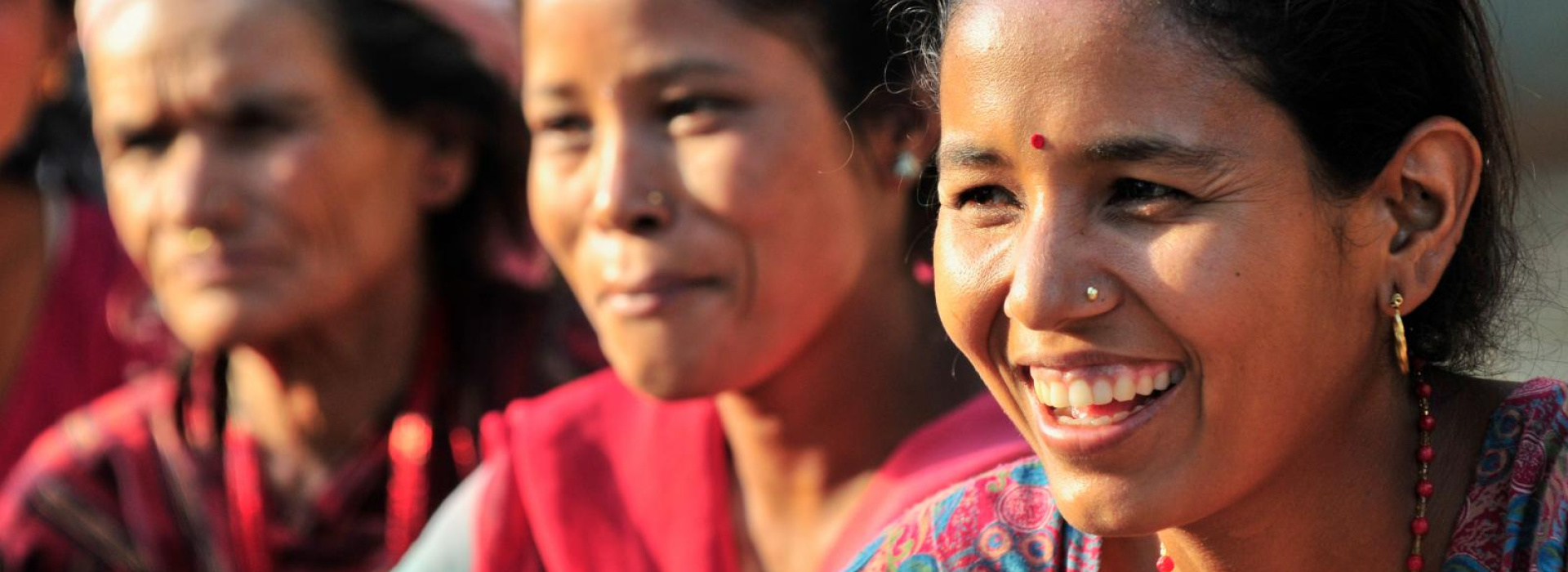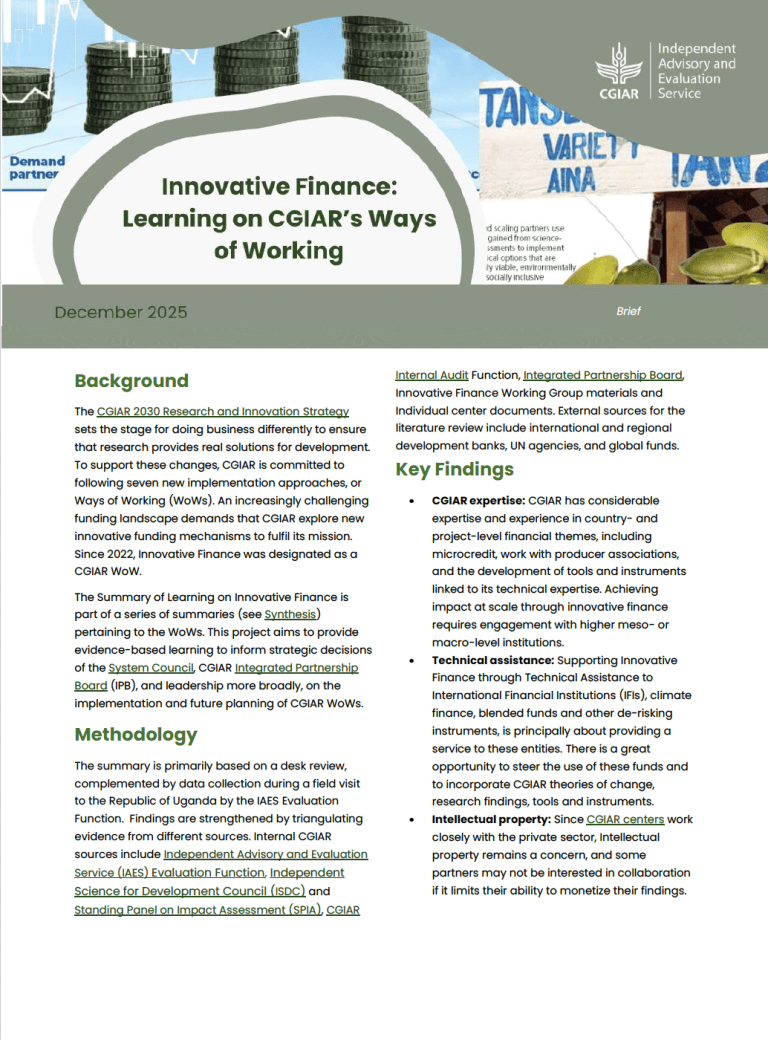The "Evaluation of Gender in CGIAR", commissioned by IEA, is the first independent, System-wide evaluation on this topic. It was originally conceived as a single evaluation covering both gender in research and gender at the workplace. While both contributing to the common objective of gender equity, these two dimensions relate to a distinct set of issues and actors, with different impact pathways. The two dimensions, therefore, were evaluated by different teams, using different methodologies, and the results are published in two separate volumes: "Volume I: Gender in CGIAR Research"; and "Volume II: Gender at the workplace". The two Evaluations were conducted in parallel and findings and information were exchanged at key times during the evaluation process, which led to the formulation of a common recommendation.
1. Volume I: Gender in CGIAR Research
2. The Evaluation found that there has been significant progress towards gender equity in CGIAR since 2010, with key institutions strengthened and gender mainstreaming incorporated across all research programs, resulting in a growing body of gender research. Though much has been achieved, there is still more that CGIAR must do in order to achieve its objectives. The Evaluation listed 11 recommendations for future action relating to clearer vision and action plan for gender equity; greater consistency in gender research; stronger systems for monitoring and evaluations of outputs and outcomes and support to gender capacity and expertise.
A video summarizing the findings and recommendations from the evaluation of Gender in CGIAR research can be found below. Volume II: Gender at the CGIAR Workplace The Evaluation found that CGIAR has made a strong commitment to increasing the representation of women across all levels of the System and its Centers. The evaluation revealed that the centers have done well in establishing policies that foster gender equity although there is a significant gap between espoused values and policies and actual practice at the managerial and operational levels. While moderate progress in the representation of women has been made since 2008, women remain under-represented in professional, scientific, and leadership roles in the Centers at least to a moderate extent. It also concluded that priority should be given to increasing the representation of women in groups that have the strongest bearing on the delivery of the Center’s missions, which will require target-setting and proactive recruiting. The Evaluation listed 9 recommendations (one of which is a shared recommendation with Volume I: Gender in Research on the need for a high-level vision statement on gender), addressed to both System-level and Center-Level representatives.
- TORs: Evaluation of Gender in Research and in CGIAR workplace
- Inception Report: Evaluation of Gender in CGIAR Research and in the CGIAR Workplace
- Evaluation Report - CGIAR Gender in Research (Vol I)
- Summary Report: Gender in CGIAR Research (vol I)
- CGIAR Gender in Research Evaluation Report vol I: Annexes A-E
- CGIAR Gender in Research Evaluation Report vol I: Annex F
- Evaluation Report: Gender at CGIAR workplace (vol II)
- Summary Report - CGIAR Gender at workplace (vol II)
- System Management Board response-Evaluation of Gender at workplace (vol II)
- System Management Board Response- Evaluation of Gender in CGIAR Research (vol I)



